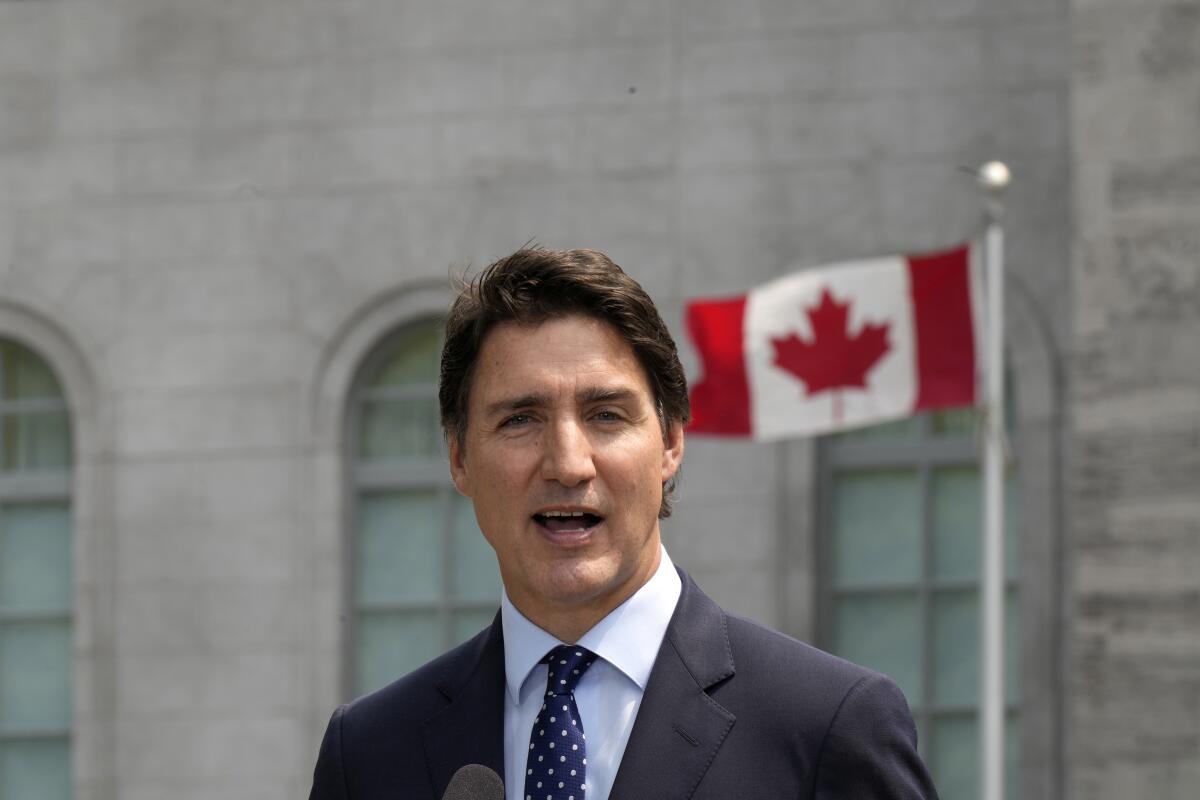Column: Canada is recruiting immigrants from Silicon Valley to boost its economy. It might work

- Share via
TORONTO — Canada has launched an ambitious program to recruit highly skilled immigrants from all over the world — including from the United States, where our sclerotic immigration system makes it difficult for foreign tech workers to obtain work visas.
Last month, Canada offered a three-year work permit to anyone holding a U.S. H-1B visa, the most common entry permit for immigrants working in the tech sector. The program, aimed partly at workers laid off in Silicon Valley’s recent downturn, drew 10,000 applicants in its first 48 hours — “a strong indication of just how competitive Canada is on the global stage,” a spokesman for the country’s immigration ministry said.
It was also a reflection of frustration among migrants who find the U.S. visa system difficult and slow. According to one estimate, only about one in 10 people who register for the annual H-1B lottery get a visa.
“A Canadian visa is much easier,” Gireesh Bandlamudi, a 29-year-old software engineer from India, told me. With a U.S. job offer in hand, he considered his chances of winning an H-1B and applied to Canada instead. He now works remotely with AtoB, a San Francisco firm that provides financial services to trucking companies, from his new home in Vancouver.
“My visa happened in four weeks, max!” he marveled.
The United States and Canada are both trying to lure the world’s best technologists, but they’re using very different strategies when it comes to immigration policy.
U.S. policy has been self-limiting, if not self-defeating.
Since 1990, U.S. law has a fixed cap of 65,000 new H-1B visas every year, plus 20,000 for holders of master’s or doctoral degrees from American universities. U.S. tech industry groups have long complained that those limits are too low, but efforts to raise them have been stymied by the partisan divide over immigration policy.
In contrast, Canada is deliberately seeking a big surge in immigration as part of a broader strategy to grow its economy.
The Liberal Party government of Prime Minister Justin Trudeau has boosted immigration more than 40% in the last five years, admitting more than 400,000 new permanent residents in 2021.
On a per capita basis, that’s more than four times as many immigrants as the United States admits. The U.S. issues roughly a million permanent resident permits each year, but the U.S. population is more than eight times the size of Canada’s.
Canada is also fast-tracking applications for work permits for anyone with a sought-after skill, a category that includes not only high-tech, but healthcare workers, carpenters, plumbers and pipefitters, who are also in short supply north of the border. That’s how Bandlamudi got to Vancouver, with the help of a technology consulting firm called MobSquad.
In the United States, an immigration policy like that would touch off ferocious debate in Congress, where Republican hardliners have argued that legal immigration should be reduced.
Not in Canada. Here, increased immigration has long been supported by most of the country’s major parties.
When Trudeau announced higher immigration goals last year, the initial criticism from the opposition Conservative Party wasn’t that the numbers were too big, it was that the government wasn’t approving applications quickly enough.
More recently, debate has focused on the country’s housing shortage; more new immigrants are arriving than new housing units are being built, and home prices in Toronto and Vancouver have reached or exceeded Los Angeles levels.
But those worries have merely produced suggestions that the government should slow the immigration surge, not reverse it.
“There’s an argument that the government is moving too fast, but it’s not being made on anti-immigration grounds per se,” said Doreen Barrie, a political scientist at the University of Calgary. “If we bring in millions more immigrants and the economy goes south, that could change. Canadians are not all saints. There are people who would prefer a more homogeneous society.”
So far, though, Canada’s conservatives have avoided making immigration a major political issue — unlike U.S. Republicans.
Conservative Party leaders have supported more legal immigration for the same reason as Trudeau’s Liberals, as a strategy for economic growth. And Canadian conservatives have been competing for votes in immigrant communities for decades, with considerable success.
But it also reflects a basic difference between the two countries.
“We don’t have a border with Mexico,” Barrie noted. “In Canada, we get to choose who comes in.”
For the United States, immigration as a political issue revolves around unauthorized entries across the southern border, a problem Democrats and Republicans have attempted to solve without much success.
For Canada, illegal immigration is a smaller, more manageable issue. Last winter, some 20,000 migrants walked into Canada on a rural road from northern New York state into Quebec — an upsurge big enough that it touched off political controversy. Under pressure from conservatives, Trudeau negotiated a deal under which Canadian authorities could return asylum seekers to the United States, making Canada look not so different from other countries after all.
Still, there ought to be a lesson for us in Canada’s broad support for increased high-skill immigration. A similar bipartisan consensus almost certainly exists in Congress, between pro-immigration Democrats and pro-business Republicans. But in our case, shouting matches over the southern border keep getting in the way.
More to Read
Get the L.A. Times Politics newsletter
Deeply reported insights into legislation, politics and policy from Sacramento, Washington and beyond. In your inbox three times per week.
You may occasionally receive promotional content from the Los Angeles Times.











